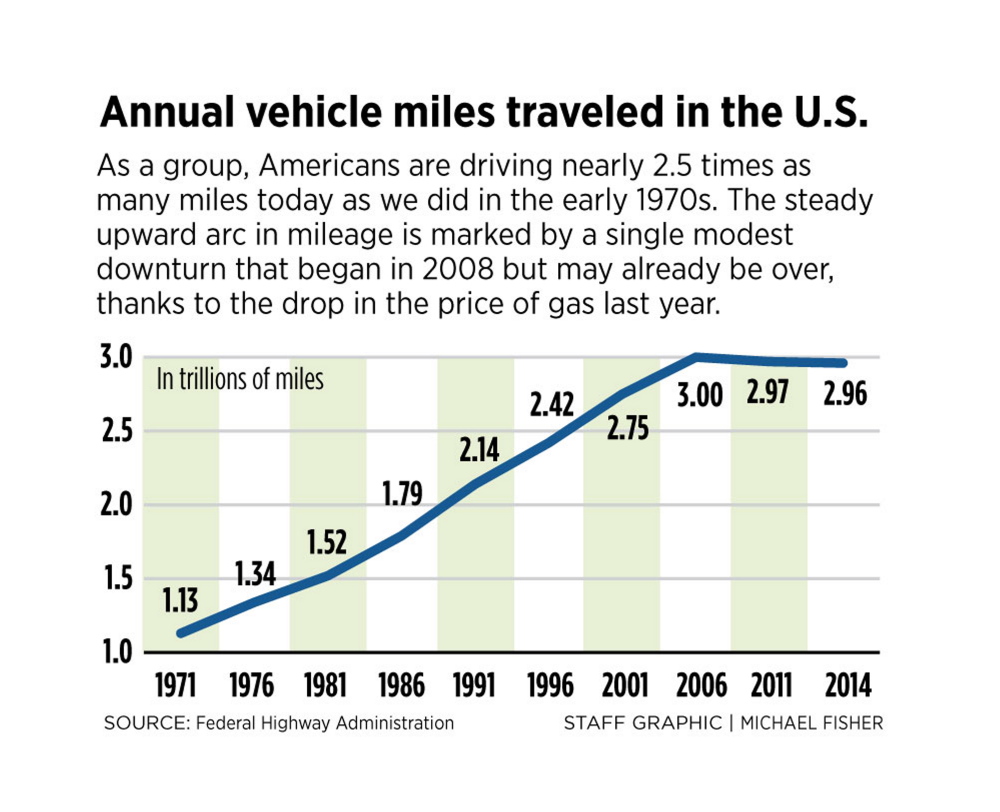It seemed at first like a reasonable expectation. Looking to replace a 16-year-old car, I assumed that comparable vehicles – bought new or lightly used – would have markedly higher fuel efficiency. Technology had come a long way since 1999 when our all-wheel-drive (AWD) wagon rolled off the assembly line with its hand-crank windows and manually adjusted mirrors. How hard would it be to top the 22 city/29 highway miles-per-gallon (mpg) rating of our rusted relic?
Surprisingly difficult, as it happened. If we bought a 2010 wagon by the same manufacturer, the mpg rating slipped to 19 city/27 highway. Upgrade further to a 2014 and we’d still get only 21/28.
Similarly sized AWD vehicles by other manufacturers all had comparable mpg ratings. We found one new model with a rating of 27 city/32 highway, but it was considerably smaller with a third less cargo volume. (Fuel efficiency would be greater without AWD, admittedly, but we live in a setting where a front-wheel drive car can be grounded for days during stretches of snow, ice and mud.)
Even base-model vehicles half the age of our wagon offered an impressive array of conveniences and safety features – all evidence of sophisticated design and technological wizardry. So how was it that fuel efficiency got left in the dust?
The answer traces back decades. Forty years ago, Congress created the first Corporate Average Fuel Economy (CAFE) standards in response to the 1973 oil embargo. It set fleet-wide annual averages that each automaker must achieve – a move designed to benefit national security (reducing dependence on foreign oil), consumers (paying less at the pump), and the planet (reducing greenhouse gas emissions and damaging air pollution).
The original standards, which took effect in 1978, gave a significant boost to fleet-wide fuel economy. But then progress stalled – for a quarter-century. It wasn’t until 2007 that the Energy Independence and Security Act raised CAFE standards again.
In 2012, the Obama administration rolled out new CAFE standards for 2017 through 2025, which could lift the fleet average to around 50 mpg. In November 2014, Car and Driver announced that “we’re in the middle of America’s greatest-ever increase in fuel economy requirements,” and predicted that we’ll be seeing a lot more hybrids and three-cylinder engines in coming years.
CAFE standards, the Union of Concerned Scientists cautions, rely on outdated testing that overinflates fuel economy – so vehicle window-sticker ratings generally run well below the CAFE standard. The average, on-the-road economy of new cars and light trucks by 2025 will likely be around 36-37 mpg.
Will the new technologies needed to boost fuel-efficiency make cars more expensive for consumers? Undoubtedly, but that up-front cost will help offset the huge externalities that have gone untabulated at the car dealerships and pumps: the military investments related to foreign oil; the billions in federal subsidies to oil and gas industries; the climate impacts from greenhouse gas emissions; the public health costs of widespread air and water contamination; and the environmental repercussions of drilling, fracking and fuel transport. During the three decades in which CAFE standards were flat-lined, we lost incalculable sums to these externalities and did planetary damage that will not quickly heal.
We further raised the ante over those years by driving more, a lot more. Collectively, we’ve gone from driving about 1.3 trillion miles when the CAFE standards were enacted to nearly 3.1 trillion miles today. The steady upward arc of miles over those decades is marked by a single modest downturn that began in 2008 but may already be over. With the 2014 drop in fuel prices, vehicle miles traveled appear to be climbing again.
The fuel economy we need is not yet reflected on many vehicle window stickers, but each of us can minimize the number of miles logged behind the wheel. Given the far-reaching costs of fossil fuels, that truly does seem like a reasonable expectation.
Marina Schauffler, Ph.D., is a writer who runs Natural Choices.
Send questions/comments to the editors.



Comments are no longer available on this story